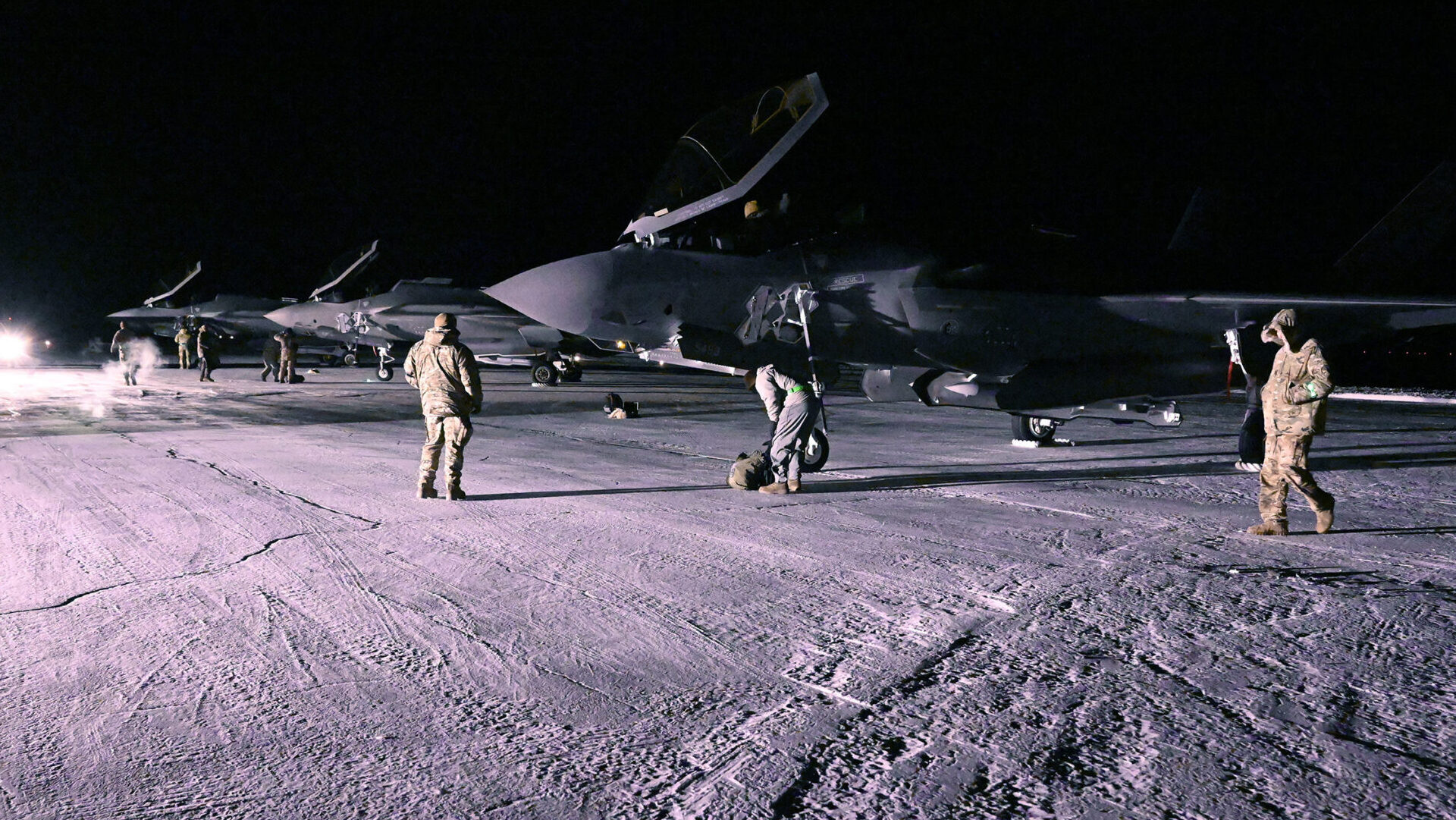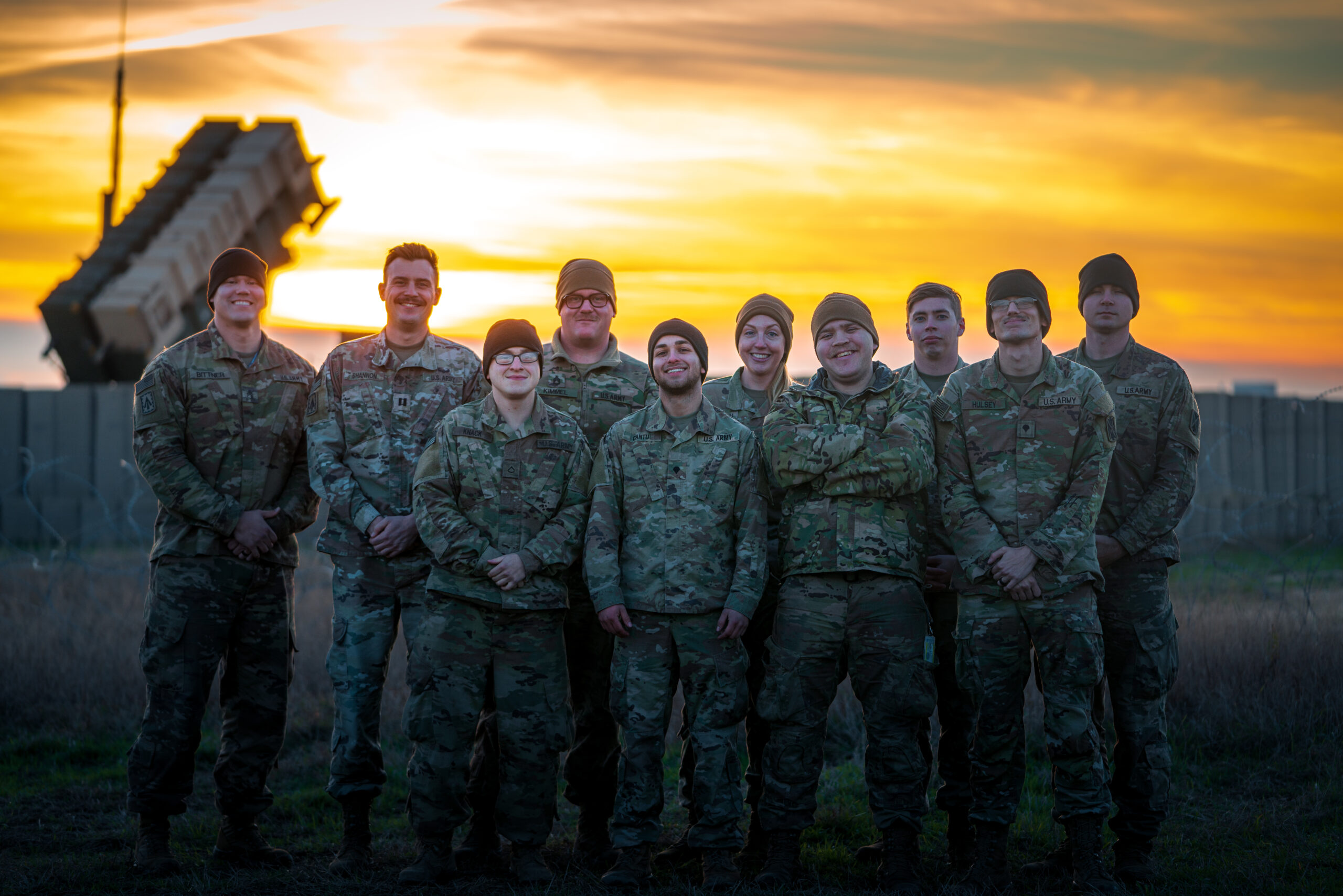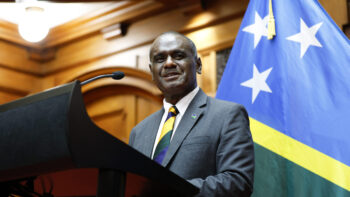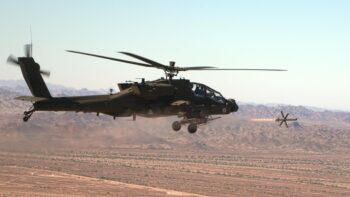
Pilots and ground crew prepare F-35A aircraft deployed to Thule Air Base, Greenland, to take off on sorties during Operation NOBLE DEFENDER 23-2.1 Jan. 16, 2023. Approximately 225 U.S. and Canadian personnel from multiple locations across both countries are supporting the joint exercise. (Department of Defense photo by Master Sgt. Benjamin Wiseman.)
In the film Rocky, the Philly pugilist talks about what attracted him to Adrian. “She’s got gaps, I got gaps,” he says. They’re not the only ones. The US, Europe, and NATO also have gaps – supply chain gaps, air-and-missile-defense gaps, interoperability gaps, and munitions gaps, to name a few.
Due to the conflict in Ukraine, these gaps have become all too evident. Filling them with capability, however, is now top of mind for the alliance. While only seven of NATO’s 30 member states met their 2 percent GDP defense spending target in 2022, with two other countries close behind, defense spending across NATO increased by 2.2 percent in real terms from 2021 to 2022.
“I believe this is the leading edge of a significant increase in European focus on modernization and readiness,” said Gen. Christopher Cavoli, commander, United States European Command, and Supreme Allied Commander Europe, as part of his Senate confirmation hearing last year.
“We have seen our NATO allies increase – in some cases dramatically increase – defense budgets, and provide large quantities of military equipment to Ukraine. Some nations donated the entirety of a specific capability in their inventory. We also witnessed the rapid deployment of NATO forces across a large portion of southeast Europe. These new procurement initiatives will ensure a more combat credible alliance.”
Investing In Interoperability

Gen. (ret) Jeff “Cobra” Harrigian is vice president of strategic campaigns for Lockheed Martin.
In order to simultaneously restore conventional stockpiles, arm Ukraine, and develop the next generation of weaponry like hypersonics, the US, Europe, and NATO countries should view modernization across Europe through a lens of buying smart risk over time, according to Jeff “Cobra” Harrigian, vice president of strategic campaigns for Lockheed Martin, who retired from the Air Force in July 2022 as commander, US Air Forces in Europe, US Air Forces Africa, and Allied Air Command.
“That means considering the balance between going after exquisite, expensive technology versus mature systems that are readily available on the market today, which are particularly needed as the threats continue to evolve,” he said. “That will clearly be challenging from an economic perspective. It’s a matter of seeing the vision out in front while at the same time being ready for today. That’s not an easy balance for anybody, for any nation, particularly recognizing where the stakes are today and where they could be in the future.”
Interoperability and data sharing are key elements of that vision. From an air component perspective, that means interoperability in both the TTPs – tactics, techniques, and procedures – and in the data to ensure that all the partners collectively understand the threat environment and what’s needed in response.
“If you’ve got aircraft from multiple nations and they can’t share data, then they are just talking to each other over the radio,” said Harrigian. “From a commander’s perspective, there is a certain amount of risk there because you do not want a decision to get made because somebody didn’t have all the data.
“As we started to introduce F-35s into Europe, we had the ability to share data not only amongst those airplanes but could also push that data out across Link 16 to basically everybody that was on Link 16 through all domains. Our connectedness and ability to move information across all domains will clearly generate a deterrent value that is going to be important.”
Besides the US, South Korea, Japan, Australia, and Israel, European and Scandinavian customers for the F-35 include Italy, Denmark, the Netherlands, Norway, Belgium, Poland, Finland, and Switzerland.
“Some countries are clearly changing their combat air procurement to specifically try and address the gaps in European ability to deter and if necessary defeat, because that’s what you need to be able to do to deter Russia,” said Justin Bronk, senior research fellow for Airpower and Technology on the Military Sciences team at the Royal United Services Institute (RUSI), a London-based defense and security think tank.

Justin Bronk is senior research fellow for Airpower and Technology on the Military Sciences team at RUSI (Royal United Services Institute).
“Those are the countries you see that are recommitting or committing newly to large numbers of F-35s, or increasing their F-35 buys, and that are spending large amounts of money to order lots of standoff munitions: JASSM, JASSM-ER, AGM SLAM-ER, SPEAR 3,” he said. “In other words, they’re buying equipment that is expensive but is specifically designed to either do that SEAD/DEAD Suppression and Destruction of Enemy Air Defenses role, the destruction being the key bit, or at least to be able to operate credibly in the absence of that task being fully completed.”
Bronk notes, however, that there’s now a split in Europe between countries that have evolved their air-procurement requirements to concretely address gaps in the continent’s warfighting capability to deter, and if necessary, defeat an adversary and those that are more focused on developing a home-grown sixth-generation fighter – whether that be SCAF (Système de combat aérien du futur) or Tempest GCAP (Global Combat Air Programme).
“Even with the best will in the world [those new designs] will not be available until the late 2030s at the earliest, and therefore don’t actually help with plugging any of those gaps for the next decade,” said Bronk. “Indeed, in many cases actually hinder it because the investment that you need to put in upfront to get the ball rolling for the R&D and the initial production orders for those next-generation platforms is competing directly with the money that you would need to plus up what we currently have in order to plug the gaps.”

Members of Charlie Battery, 5th Battalion, 7th Air Defense Artillery pose with one of their Patriot missile launchers in Poland in late 2022. US Army photo.
Building The Ground-To-Air Capability
Over the past couple decades, European and NATO ground-based air defense (GBAD) has been subsumed by a focus on building air superiority against adversaries and on counterterrorism operations in permissive air domains. Russia’s attack on Ukraine changed that overnight, especially its use of drones, rockets, and hypersonic missiles against civilian population centers.
The US, Europe, and NATO responded by shipping air-and-missile-defense systems like the Patriot system to Ukraine.
Reality has been a wake-up call, though, because when those same nations looked inward they found that their home-grown ground-to-air capabilities inadequate for the threat – with some even still dependent on Russian S-300 systems – most of which have since been sent to Ukraine for its defense.
“European states will likely continue to lack sufficient ground-based air-defense capabilities to counter Russian cruise and ballistic missiles [as] European missile defense capabilities are lagging,” stated a recent report from the Center For Strategic & International Studies’ Europe, Russia, and Eurasia Program entitled, Making the Most of the European Sky Shield Initiative.
In the report, though, CSIS did note that NATO and the European Union have “prioritized multinational cooperation” to resolve some of the deficiencies in their GBAD efforts.
That is most needed, according to Cavoli. “Integrated Air and Missile Defense (IAMD) is an inherently joint and combined requirement that demands integration of all services’ air and missile defense capabilities in order to defend critical infrastructure,” he said last year as part of his Senate confirmation,” he said. “Our goal is to build an IAMD architecture including US, allied, and partner capabilities to defend sovereign airspace and national assets against any air or missile threats from outside Europe or NATO territory.
“The US is encouraging NATO allies to improve their missile defense capabilities by investing in interceptors and sensors, expanding data sharing and integration, and taking other steps to counter existing and projected ballistic and cruise missile threats.”
Doing so is absolutely necessary if Europe expects to deter Russia from future aggression, according to Bronk.
“If we can roll back [Russia’s] integrated air defense system, then the Russian army does not pose a threat,” he noted. “NATO has enough tac air that that’s just not a problem if we can roll back the IADs.
“If NATO in Europe has that credible capability, the Russians probably won’t try [aggressions against any NATO country]. If we don’t, and currently we don’t without the US doing most of the heavy lifting, that’s much more of a problem.”




















